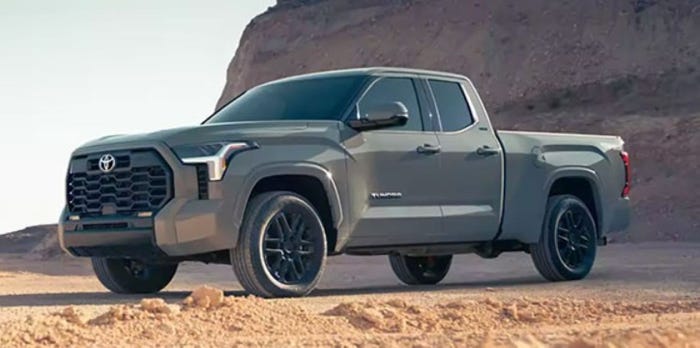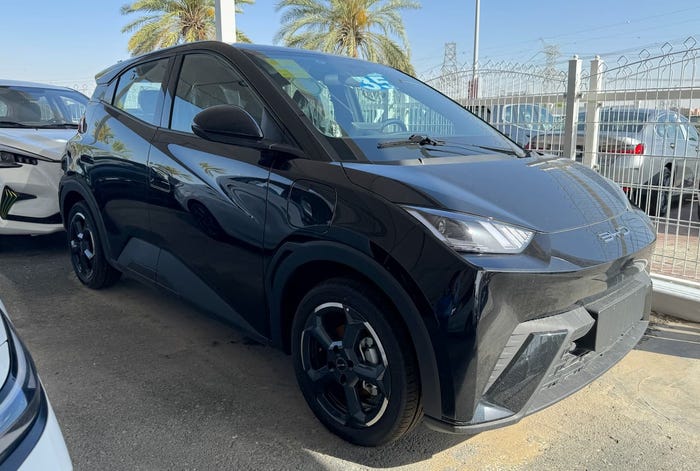Toyota Defends Prius Plug-In Against Rivals; Fleet Testing Moves to August
The auto maker is betting cost-conscious consumers will be receptive to a plug-in hybrid with a smaller battery and shorter electric range.


LA JOLLA, CA – Toyota Motor Corp.’s Prius plug-in-hybrid-electric vehicle is not due to debut in the U.S. until 2012, but already the auto maker is defending the PHEV’s relatively meager 13-mile (21-km) electric range against competitive brands that will enter the market before then.
“We’re trying to figure out where the majority of buyers are going to be,” says Bill Reinert, national manager-advanced product technology for Toyota Motor Sales U.S.A. Inc. during a recent Toyota Sustainability Seminar here.
“Smaller batteries charged more frequently make more sense for many people,” he says, reciting Toyota’s philosophy about its Prius plug-in.
Reinert says Toyota is confident it has a good formula for the PHEV segment, despite the impending fall launches of high-profile rivals, such as Nissan Motor Co. Ltd.’s pure-electric Leaf (100 miles [160 km] on a full charge) and General Motors Co.’s Chevy Volt extended-range PHEV (40 miles [64 km]).
“If you want to (visit) grandma driving the Leaf, can you do that?” Reinert asks rhetorically. “As long as she lives within 50 miles (80 km), because you’ve got to come home. And if you’re going to drive on the freeway, that reduces your voltage. And are you going to have the air conditioner on? Because that reduces your voltage.
“That’s the one thing we want to tell everybody,” he adds. “The bigger the battery, the bigger the variance in how the car performs, because of the low amount of energy density in the battery. You might have a 100-mile range, but if (the weather) gets very cold or very hot, that range changes. (If) you’re driving very fast, the range changes. So there’s a big variability.”
Reinert also notes long-distance travel in an electric vehicle with a larger-capacity battery will be detrimental to fuel economy due to the added weight. “But if you’ve got a shorter range, then buying a bigger battery might help,” he says.
In a 10-mile (16-km), mixed-terrain test drive here, Ward’s finds the Prius PHEV similar in feel to the current Prius hybrid, with the exception of grabbier brakes.
The tester returns 99.9 mpg (2.4 L/100 km) average fuel economy, according to the car’s driver-information system, with 69% of the miles driven in EV mode. Toyota says the all-electric mode cuts out and the car begins to run as a hybrid at 62 mph (100 km/h).

Prius PHEV to offer meager 13-mile electric-only range.
The Prius PHEV here looks much like the current Prius hybrid barring the unique Blue Mica paint color, special decals and battery-charging assembly near the driver’s side-view mirror that accepts a cord, which is included with the vehicle. Interior space is about the same, except for a slightly raised floor in the cargo area.
The Prius PHEV’s lithium-ion batteries are charged in three hours using 110V. Toyota has added two more Li-ion batteries than are used in the conventional hybrid. All three batteries are contained in one pack, for an added weight of 220 lbs. (100 kg), compared with the hybrid model.
The auto maker this year will place the Prius PHEV with select consumers, as well as university and government employees, as part of a fleet-testing program in the U.S.
While it may seem unnecessary to conduct research on plug-ins given the Volt and Leaf are going on sale in about six to eight months, Toyota officials believe there still are unanswered questions regarding the technology and the way consumers will interface with it.
“Many people will say they’re interested in purchasing this car off a survey, but will they really?” questions Jaycie Chitwood, senior strategic planner-advanced technologies for TMSUSA.
“Because this is such a different animal, it will require (behavioral) change,” she adds. “Even though it may not on the surface sound like a big deal – plugging in every night? We don’t know. It could be a big deal. And also, (the PHEV) is going to be more expensive than the Prius (hybrid) when it comes out.”
The additional cost for the Prius PHEV likely will be “thousands” more than the current hybrid model, but Chitwood does not provide a figure, noting the fleet program will aide in pricing the car.
“The pricing is still a really big question mark,” she says. “(If a Prius owner is) already spending at least $2,500 more for (the hybrid), would (he) spend at least that much more for the plug-in?”
The ’10 Prius hybrid ranges from $22,800-$28,070, but can hit the mid-$30,000 range with options. Nissan’s all-electric Leaf will start at $32,780 before federal and state tax incentives.
Chitwood says the Prius PHEV qualifies for the same federal spiffs, but Reinert reminds Toyota’s goal is to make a reasonably priced vehicle sans incentives, as the tax breaks eventually will run out.
Chitwood also admits the result of the Prius PHEV fleet program could diverge from Toyota’s thinking. “The Volt has defined the space as though the plug-in hybrid equals 40 miles (64 km). Are customers going to be satisfied with our strategy of a smaller battery?”
Should the Prius PHEV fleet program reveal drivers want an EV range of more than 13 miles, Reinert says there isn’t much Toyota engineers can do before the car’s 2012 market debut to make that happen.
“It would be almost impossible to make the battery pack bigger to give it more range,” he says, noting making it smaller for less range is feasible in two years’ time.
One of the Prius PHEV test programs will place 20 of the 150 fleet cars in the Boulder, CO, SmartGridCity project, implemented by utility-company Xcel Energy. The PHEV’s placement and usage is being overseen by the University of Colorado-Boulder’s Renewable and Sustainable Energy Institute.
The plan is to shuffle the 20 plug-ins to new participants every three months over an 18-month period. Chitwood says the 3-month period is sufficient to judge habits.
“We want to get (participants) to the point of habit on charging, but we also want to see if they start changing their driving or charging behaviors a little bit,” she says.
Adds Reinert: “(PHEVs) have never been in customer hands. Nobody has this kind of program going on. So we want to find out as much as possible about how customers like this car. Do they like to charge at night? Do they want to charge during the day?”
The Prius plug-in fleet only is available for testing to about 1,000 customers of Xcel Energy’s smart-grid technology, says Alison Peters, managing director of UC-Boulder’s Leeds School of Business’ Deming Center for Entrepreneurship.
The results will be posted online, and Xcel will be experimenting with different season pricing during the SmartGridCity program.
“Different seasons are going to have different experiences,” she says. “(Xcel) will do some different kind of pricing that is summer-only; so how do these (factors) play in? And the (test drivers) who come later, will they have learned more about plug-in hybrids than the people who come earlier?
“It’s (about) trying to work with this very dynamic, real-world experience.”
The Prius PHEV/SmartGridCity initiative is due to get under way in August, five months later than the start date Toyota gave last year. Peters says Xcel Energy is awaiting approval from Colorado’s Public Utilities Commission for the pricing pilot program.
ColoradoDaily.com reported in February the costs of the SmartGridCity project had “skyrocketed,” from $15.3 million in capital expenditures in March 2008 to $42.1 million, not including maintenance and operating costs for the new grid.
The website says the increase was due to the “unanticipated difficulty of constructing the system’s fiber network,” needing more fiber than previously thought and having to drill through granite and remove large boulders.
Read more about:
2010About the Author
You May Also Like





